
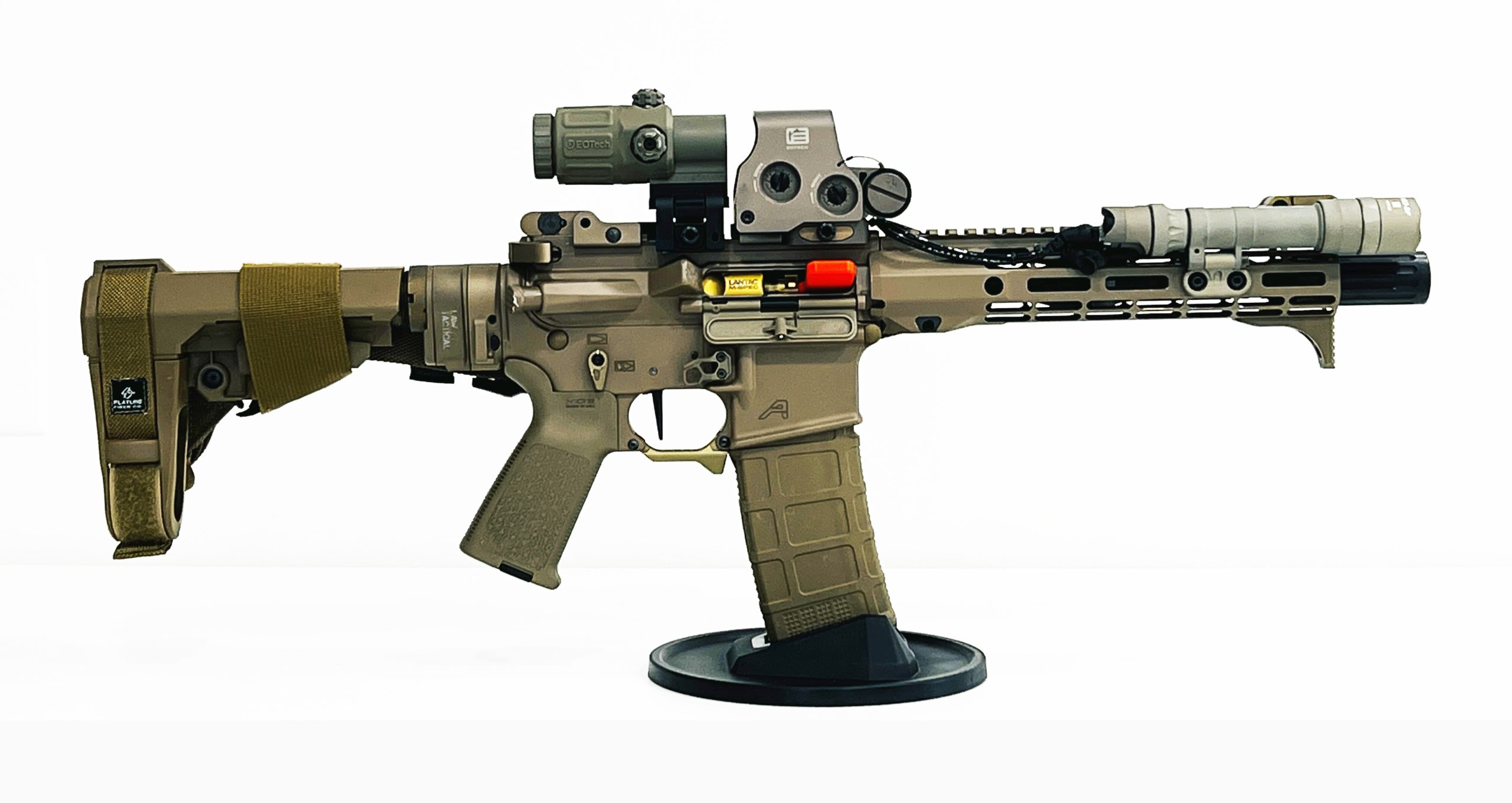
Categories:
When it comes to choosing optics for your AR-15, there are several options available, but the two most popular choices are scopes and red dots. Understanding the basics of these optics is crucial in making an informed decision that suits your shooting needs.
Scopes, also known as telescopic sights, offer magnification capabilities that allow you to zoom in on distant targets with precision. They are ideal for shooters who engage in long-range shooting or require enhanced target identification. Scopes come in various magnification levels, typically ranging from 1x to 12x or higher. Additionally, they often feature adjustable turrets for windage and elevation adjustments.
On the other hand, red dot sights utilize a simple illuminated reticle that aids in quick target acquisition. They do not provide magnification but offer a clear and unobstructed view of your surroundings while keeping your focus on the target. Red dot sights excel in close-quarters combat scenarios or rapid target engagements due to their unlimited eye relief and parallax-free design.
Considerations such as shooting environment, intended purpose, and personal preference play a crucial role in determining which optic suits you best. Scopes excel at longer distances and precise shots while red dots shine when it comes to close-range engagements and rapid target acquisition.
Ultimately, both scopes and red dots have their unique advantages depending on your specific needs as a shooter. By understanding these basics of AR-15 optics, you can make an informed decision about which optic will enhance your shooting experience while maximizing accuracy and efficiency on the range or during tactical operations.
When it comes to choosing the right optics for your AR-15, two popular options that often come up are scopes and red dots. Both have their strengths and weaknesses, and understanding these differences is crucial in making an informed decision. Scopes, with their magnification capabilities, offer shooters the ability to engage targets at longer distances with greater precision. Whether you’re hunting or engaging targets at the range, a scope can provide a clear view of your target and allow for accurate shot placement.
Scopes are especially useful when shooting small or distant targets. On the other hand, red dots offer a more rapid target acquisition with both eyes open due to their unlimited eye relief and non-magnified reticles. These optics use holographic or reflex technology to project a red dot onto the sight window, allowing shooters to quickly acquire their target without having to align multiple focal planes.
Red dots excel in close-quarters shooting scenarios where speed is crucial. While scopes may offer better precision at longer ranges, they can be bulkier and heavier compared to red dots. Additionally, scopes require proper eye relief and alignment for optimal performance. Red dots are lightweight and compact by design but lack magnification capabilities. Ultimately, the choice between scopes and red dots depends on your specific shooting needs and preferences.
If you prioritize accuracy at long distances or need magnification for precise shots, then a scope might be your best bet. However, if quick target acquisition and versatility in various shooting scenarios are more important to you, then a red dot could be the ideal choice.
When it comes to selecting optics for your AR-15, there are several important factors to consider. Among these factors, accuracy, range, and purpose stand out as crucial elements that can greatly impact your shooting experience. Firstly, accuracy is paramount in any shooting situation. The optic you choose should provide clear and precise aiming points that enable you to consistently hit your target.
Scopes typically offer magnification options that enhance accuracy by allowing for more precise targeting at various distances. On the other hand, red dot sights are designed for rapid target acquisition and close-quarters shooting, sacrificing some magnification but providing a wide field of view for increased situational awareness. Range plays a significant role in determining the most suitable optic for your AR-15.
If you primarily engage targets at shorter distances or participate in tactical competitions or home defense scenarios where speed is critical, a red dot sight may be the optimal choice due to its quick target acquisition capabilities. Conversely, if you frequently engage targets at longer ranges or participate in precision shooting competitions or hunting activities where accuracy is paramount across varying distances, a scope with higher magnification levels would be more appropriate.
Lastly, understanding the purpose of your AR-15 will help guide your optic selection process. For those using their rifle primarily for self-defense purposes or engaging targets at close-quarters ranges, a red dot sight provides the advantage of rapid target acquisition without compromising peripheral vision.
When it comes to enhancing long-range precision on your AR-15, scopes offer several advantages that make them a popular choice for many shooters. However, like any piece of equipment, scopes also have their drawbacks. Understanding the pros and cons will help you make an informed decision when choosing the right optics for your AR-15. One of the primary benefits of using a scope is its ability to magnify targets at various distances.
Scopes with higher magnification allow shooters to identify and engage targets accurately at extended ranges. This increased clarity and zoom level enable precise shot placement, making scopes ideal for long-range shooting or hunting scenarios. Another advantage of using a scope is its reticle design. Scopes often feature intricate crosshairs or bullet drop compensators (BDC), which provide precise aiming points for different distances.
These reticles can assist in compensating for bullet drop and windage adjustments, further enhancing accuracy. Additionally, scopes typically offer better light transmission than red dot sights, thanks to their larger objective lenses. This means that even in low-light conditions, a scope can deliver bright and clear images, ensuring optimal visibility during crucial moments. However, scopes do have some drawbacks worth considering.
Firstly, they tend to be heavier than red dot sights due to their larger size and added magnification components. This weight can affect weapon balance and may not be ideal for those seeking a lightweight setup.
When it comes to choosing the right optics for your AR-15, red dot sights have gained immense popularity in recent years due to their unmatched speed and versatility, especially in close quarters combat situations. While scopes provide excellent magnification for long-range shooting, red dots offer distinct advantages that make them ideal for fast-paced and dynamic engagements. One of the primary benefits of red dots is their ability to provide rapid target acquisition.
Unlike scopes, which require aligning crosshairs precisely with the target, red dots use a simple illuminated dot or reticle that allows shooters to acquire targets quickly. This advantage is particularly crucial in close-quarters scenarios where time is limited and split-second decisions can be a matter of life or death. Moreover, red dots offer unlimited eye relief, meaning shooters can maintain a proper shooting position while keeping both eyes open.
This feature enhances situational awareness as it allows individuals to stay aware of their surroundings while engaging targets effectively. By keeping both eyes open, shooters can quickly transition between multiple targets without losing focus on the overall environment—a vital skill in tactical situations. The versatility of red dots also plays a significant role when it comes to adapting to different shooting conditions.
Regardless of whether you are operating in low-light environments or dealing with fast-moving targets, red dot sights provide an excellent solution due to their illuminated reticles. These optics often come with adjustable brightness settings that enable shooters to adapt the dot intensity according to ambient lighting conditions—ensuring optimal visibility regardless of the situation at hand.
Assessing Your Shooting Style: Which Optic Suits You Best? When it comes to choosing the right optics for your AR-15, understanding your shooting style is paramount. Each shooter possesses unique preferences and skills that influence their choice between scopes and red dots. By assessing your shooting style, you can determine which optic will suit you best and enhance your overall shooting experience.
For precision shooters who engage in long-range shooting or require magnification for target identification, a scope is typically the preferred choice. Scopes offer variable magnification settings, allowing shooters to zoom in on their target and make accurate shots at extended distances. Additionally, scopes often come equipped with reticles specifically designed for range estimation or bullet drop compensation, making them ideal for precision-oriented marksmen.
On the other hand, if you tend to engage targets at shorter distances or value rapid target acquisition over magnification capabilities, a red dot sight may be more suitable for your shooting style. Red dots provide an unlimited eye relief and a simple illuminated dot reticle that allows shooters to quickly acquire their targets with both eyes open. This makes them highly effective in close-quarters engagements or scenarios where speed is of the essence.
It’s worth noting that red dots are also favored by those who participate in dynamic shooting competitions like 3-gun matches or practical shooting drills due to their ability to facilitate quick transitions between multiple targets. Ultimately, when assessing your shooting style, consider factors such as engagement distances, desired level of accuracy, speed requirements, and personal preferences.
When it comes to choosing the right optics for your AR-15, whether it be a scope or a red dot sight, there are several important factors to consider. These factors can greatly impact your shooting experience and overall performance with your rifle. Here are some key considerations to keep in mind:
1. Shooting Purpose: Determine the primary purpose of your AR-15. Are you using it for close-quarters combat, hunting, competitive shooting, or long-range precision? Different shooting purposes require different optics. A red dot sight is ideal for quick target acquisition at short distances, while scopes offer magnification for more precise and accurate shots at longer ranges. 2. Magnification: If you need to engage targets at varying distances, consider an optic with adjustable magnification.
Scopes typically offer variable magnification options that allow you to zoom in on distant targets and also provide a clear sight picture at closer ranges. 3. Reticle Type: The reticle is crucial for aiming accuracy. Scopes feature various reticle designs such as duplex crosshairs, BDC (Bullet Drop Compensator), or mil-dot reticles that aid in estimating bullet drop and windage compensation. On the other hand, red dot sights usually have simple illuminated dots or holographic reticles that enable fast target acquisition.
4. Durability: Optics designed for AR-15s should be rugged and able to withstand recoil forces generated by the rifle’s action.
When it comes to choosing the right optic for your AR-15, the decision can be overwhelming. With a plethora of options available, such as scopes and red dots, it’s important to consider your shooting style, intended use, and personal preferences before making a final choice. By taking these factors into account, you can ensure that you find the perfect optic that enhances your shooting experience.
Firstly, consider your shooting style. Are you primarily a long-range shooter or do you engage in close-quarters combat? Scopes are ideal for precise long-range shots due to their magnification capabilities and reticle designs. On the other hand, red dots offer unlimited eye relief and quick target acquisition, making them suitable for rapid-fire engagements at short distances. Next, think about how you intend to use your AR-15.
If it’s mainly for hunting or precision shooting competitions where accuracy is paramount, a scope with higher magnification levels would be beneficial. However, if your AR-15 is primarily used for self-defense or tactical purposes that require quick target acquisition and situational awareness in close-quarters scenarios, a red dot sight might be more advantageous. Lastly, consider your personal preferences. Some shooters prefer the simplicity and lightweight nature of red dots while others appreciate the versatility offered by scopes with variable magnification settings.
It’s important to handle different optics and test them out at a range if possible to see which one aligns best with your shooting style and feels most comfortable.
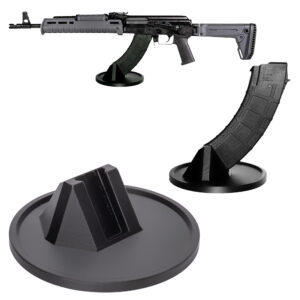

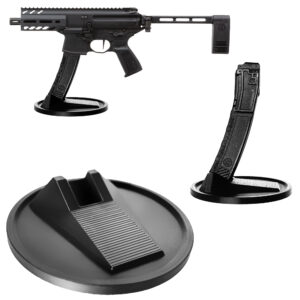
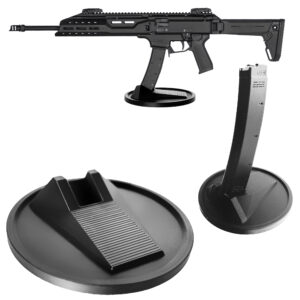



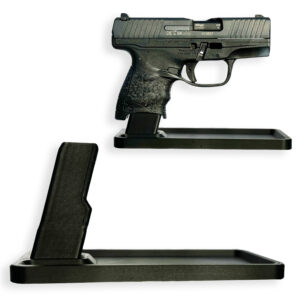
Colt
Colt M4 Carbine
Colt LE6920
Colt AR-15 A4
Daniel Defense
DDM4 V7
DDM4 V9
DDM4 V11
DDM4 ISR (Integrally Suppressed Rifle)
Smith & Wesson (S&W)
M&P15 Sport II
M&P15 Tactical
M&P15T
Bravo Company Manufacturing (BCM)
BCM Recce-16
BCM Recce-14
BCM MCMR Series
Aero Precision
M4E1 Series
AC-15
AR15 Pistol (Various Configurations)
Ruger
Ruger AR-556
Ruger SR-556
Ruger AR-556 MPR (Multi-Purpose Rifle)
Springfield Armory
Saint Victor
Saint Edge
Saint AR-15
PSA (Palmetto State Armory)
PSA PA-15
PSA AR-V
PSA Jakl (AR Pistol)
FN America
FN 15 Tactical Carbine
FN 15 Patrol
FN 15 DMR
Wilson Combat
Recon Tactical
Super Sniper
Protector Carbine
SIG Sauer
SIG M400 Tread
SIG M400 Elite
SIG M400 SDI
LWRC International
IC DI (Direct Impingement)
IC SPR
IC A5
Bushmaster Guns
XM-15 QRC
Bushmaster MOE
XM-15 Patrolman
Rock River Arms
LAR-15 Entry Tactical
LAR-15 Predator
LAR-15 Elite Comp
Stag Arms
Stag 15 Tactical
Stag 15L (Left-Handed Models)
Stag 15 Valkyrie
Noveske Rifleworks
Noveske Gen 4 N4
Noveske Space Invader (AR Pistol)
Noveske Recon
Anderson Manufacturing
AM-15 Optic Ready
AM-15 M4 Carbine
AM-15 Precision Rifle
Adams Arms
AA-15 Piston Rifle
P2 AARS (Adams Arms Rifle Series)
Black Rain Ordnance
SPEC15 Series
BRO Predator
Fallout 15
Diamondback Guns
DB15 Series
DB15CCMLB
DB15EB
Del-Ton Inc.
DTI-15
Del-Ton Echo 316H
Sierra 316M
Windham Weaponry
Windham SRC
Windham VEX-SS
Windham RMCS-4 (Caliber Conversion System)
Christensen Arms
CA-15 G2
CA-15 Recon
CA-15 Titanium Edition
Patriot Ordnance Factory (POF-USA)
Renegade Plus
P415 Edge
Revolution DI
LaRue Tactical
PredatAR
OBR (Optimized Battle Rifle)
LaRue Stealth 2.0
Battle Arms Development
Workhorse Patrol Carbine
BAD556-LW (Lightweight)
Authority Elite Rifle
Faxon Guns
Ascent AR-15
FX-19 (AR Pistol)
Streamline Ultralight Series
KE Arms
KE-15 SLT (Super Lightweight Tactical)
KE-15 Scout Carbine
Primary Weapons Systems (PWS)
MK1 MOD 2-M
MK116 PRO
MK107 (Piston AR Pistol)
ZEV Technologies
ZEV Core Elite Rifle
ZEV AR15 Billet Rifles
Franklin Armory
BFSIII AR-C1
Militia Model
F17-L (Chambered in .17 WSM)
Seekins Precision
SP15 DMR
NX15 Skeletonized Rifle
Havak Bravo
Aero Precision (Additional Models)
EPC-9 (Pistol Caliber ARs)
VG6 AR Rifles
Barrett Guns
REC7 DI
REC7 Gen II
CMMG
MK4 RCE
Resolute 300
Banshee (AR Pistol)
DPMS Panther Arms
Panther Oracle
Panther LR-308
H&K (Heckler & Koch)
HK MR556A1
HK416 (Military Variant)
Rock Island Armory (Armscor)
VR-80 Tactical AR (Shotgun AR Platform)
Troy Industries
Troy SPC-A3
Troy PAR (Pump Action AR)
Wilson Tactical
Tactical Recon AR
Protector Series
F1 Guns
FDR-15 Skeletonized Rifle
BDRx-15 Series
Juggernaut Tactical
JT-15
JT-10 Precision Rifle
AeroSurplus
Surplus AR-15 Rifles (Budget Models)
Thunder Tactical
AR-15 Basic Carbine
Tactical Builder Sets
Radical Guns
RF-15
Forged AR-Series
Dark Storm Industries
DS-15 Featureless Rifles
DS-10 Typhoon
DRD Tactical
Paratus
Aptus AR Rifles
Bear Creek Arsenal
BCA-15
AR Complete Upper Builds
Aero Survival Rifles (ASI)
ASR Tactical Series
Tactical Edge
WARFIGHTER Series
AR-15 Lightweight Rifles
Lone Star Armory
TX15 DMR
TX15 Carbine
HERA Arms
HERA H7
HERA AR-15 Lower Builds
IWI (Israeli Weapon Industries)
Zion-15
DRD Tactical
Tactical Modular Rifles
Quick-Takedown Rifles
V Seven Weapons
1776 Rifle
Hyperlite Rifle
Core Rifle Systems
Core15 Tac III
Core15 Patrol Rifle
Armalite (Original AR-15 Creator)
M15 Tactical
M15 A4 Carbine
DEF15 (Defensive Sporting Rifle Series)
PSA (Palmetto State Armory Additional Models)
PSAK-47 Hybrid (AR-AK Style Hybrid)
PSA Dagger (Pistol Caliber Configurations)
Odin Works
OTR-15
Odin Recon Rifle
Maxim Defense
MDX-508 PDX (Compact AR Pistol)
MDX-510 Rifle